Why You Should Build a Second Storey Addition Near Western Sydney International Airport
Why You Should Build a Second Storey Addition Near Western Sydney International Airport
As Western Sydney prepares for the grand opening of its new international airport, the region is undergoing rapid transformation. Property values in the surrounding areas are expected to soar, creating an ideal opportunity for homeowners to capitalise on this property boom. If your home is located near Western Sydney International Airport (WSI), building a second storey addition could be a strategic way to increase your property’s value and maximise your investment.
The Impact of Western Sydney International Airport on Property Values
The development of Western Sydney International Airport is a game-changer for the local economy, with thousands of new jobs and infrastructure upgrades already underway. According to the WSI video, the airport is expected to bring a surge in demand for housing in the surrounding suburbs, as new workers and businesses move into the area.
For homeowners in Western Sydney, this property boom presents a unique opportunity. Property values in suburbs near the airport, such as Penrith, Liverpool, Narellan and Camden, are predicted to rise sharply as the airport approaches its opening in 2026. By adding a second storey to your home now, you can position your property to take full advantage of this growth.
The Benefits of Building a Second Storey Addition

Building a second storey addition is an excellent way to add space, functionality, and value to your home. Here’s why it’s a smart move if you live near the upcoming Western Sydney International Airport:
- Maximise Your Home’s Potential
With the increased demand for housing near the airport, properties that offer more space will be highly desirable. A second storey addition gives you the chance to increase the square meterage of your home without needing to sacrifice any of your yard space. More space means more appeal to buyers or renters in the future. - Increased Property Value
A larger home with more bedrooms, bathrooms, and living areas is naturally worth more on the property market. As property prices rise in the region due to the airport development, expanding your home now could result in a significant return on investment when it comes time to sell. - Improved Views and Lifestyle
A second storey can offer enhanced views of the surrounding area, particularly if your home is in an elevated location. You’ll not only improve your home’s marketability, but you can also enjoy the lifestyle benefits that come with more space, such as a quiet retreat or additional entertaining areas. - Stay in Your Preferred Location
Many families are reluctant to leave their local area, especially if they have strong connections to the community or nearby schools and services. Rather than moving to a larger home, building a second storey lets you stay where you love while gaining the extra space you need.
Why Now is the Perfect Time to Build
With the Western Sydney International Airport scheduled to open in 2026, there’s a limited window to take advantage of the property market before prices peak. Building a second storey now allows you to capitalise on the current market conditions while also preparing for the inevitable rise in property values as the airport nears completion.
The increased infrastructure, including improved transport links and new amenities, is set to make Western Sydney a highly sought-after place to live and work. By expanding your home now, you’ll be ready to benefit from the influx of interest in the area in the coming years.
Considerations for a Second Storey Addition
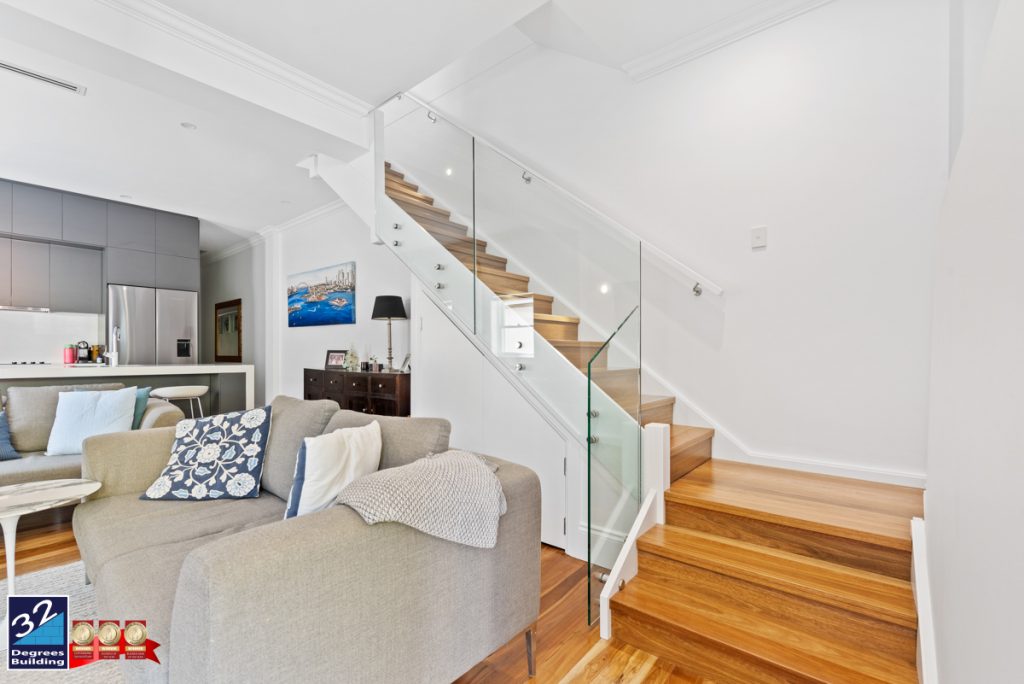
When planning a second storey addition, it’s important to work with a builder who has experience in these types of projects. A well-designed second storey will seamlessly integrate with your existing home, maintaining both the aesthetic and structural integrity of the building.
At 32 Degrees Building, we specialise in high-quality second storey additions that are tailored to meet the unique needs of each homeowner. Our team will guide you through the entire process, from initial design through to final construction, ensuring minimal disruption to your daily life.
How a Second Storey Can Increase Your ROI
For homeowners, the decision to build a second storey addition is often about the potential return on investment (ROI). With Western Sydney on the verge of a property boom, the ROI on a second storey addition is likely to be substantial. Here’s how:
- Increased Sale Price: A larger, more modern home will command a higher price when it comes time to sell. With the increased demand for housing near the airport, your property will stand out in a competitive market.
- Higher Rental Income: If you’re considering renting out your home, a second storey can increase the rental yield by allowing for additional tenants or creating separate living areas that can be leased independently.
- Future-Proofing Your Investment: As the airport brings more jobs and economic activity to the region, property prices are set to continue rising. Building now ensures that your home is positioned to benefit from this long-term growth.
Lifestyle Benefits of a Second Storey Addition
In addition to the financial benefits, a second storey addition offers lifestyle enhancements that can improve your quality of life. Whether you need more space for a growing family, want to create a dedicated home office, or simply want to enjoy more privacy, a second storey can transform your home in ways that enhance your day-to-day living.
With the flexibility to design new bedrooms, bathrooms, and living spaces, you can customise the layout to suit your needs and future-proof your home for whatever life brings next. And because you’re building up rather than out, you retain your backyard space for entertaining, gardening, or family activities.
Why Choose 32 Degrees Building?
At 32 Degrees Building, we’re proud to be one of Sydney’s leading builders specialising in second storey additions. Our team of experienced professionals works closely with homeowners to deliver seamless, high-quality results that blend perfectly with your existing home.
We understand that building a second storey is a major investment, and we’re committed to providing the highest level of craftsmanship and customer service to ensure your project runs smoothly from start to finish.
With Western Sydney on the cusp of a property boom, now is the perfect time to invest in a second storey addition. Let 32 Degrees Building help you make the most of your home’s potential, so you can enjoy the benefits for years to come.
Final Thoughts: Don’t Miss Out on the Western Sydney Property Boom
The development of Western Sydney International Airport is set to bring unprecedented growth to the region. As property values continue to rise, building a second storey addition is a strategic way to capitalise on this once-in-a-lifetime opportunity.
If your property is located near the airport, now is the time to act. Expanding your home will not only increase its value but also ensure that you’re well-positioned to take advantage of the property boom that’s already underway.
Contact 32 Degrees Building today to find out how we can help you build the second storey addition that will maximise your investment and enhance your lifestyle.
FAQs
- How will Western Sydney International Airport affect my property value?
The airport is expected to significantly increase property demand in the surrounding areas, leading to a rise in property values. - How long does it take to build a second storey addition?
The timeline can vary depending on the complexity of the project, but typically, it can take anywhere from a few months to complete. - Will a second storey addition increase my home’s value?
Yes, expanding your home’s square footage and adding new living spaces will make your property more valuable, particularly in areas near the airport where demand is set to increase. - Is it better to build now or wait?
Building now allows you to capitalise on current construction costs before they rise with increased demand. Additionally, you’ll be ready to benefit from property value increases as the airport nears completion. - Can I live in my home during the build?
In many cases, you can remain in your home while the second storey addition is being built. We work to minimise disruption and ensure your comfort during the process. - What are the benefits of choosing 32 Degrees Building?
We specialise in second storey additions, offering expert craftsmanship, personalised service, and a seamless process from start to finish.
Building Up or Extending Out: Cost-Effective Solutions
In this article, we’ll discuss the pros and cons of both second storey additions and ground floor extensions to help you determine which option is the most affordable for your unique situation. We’ll also touch on aspects such as the return on investment, disruption during construction, and the long-term benefits of each option to give you a comprehensive understanding of what to expect.
Second Storey Additions
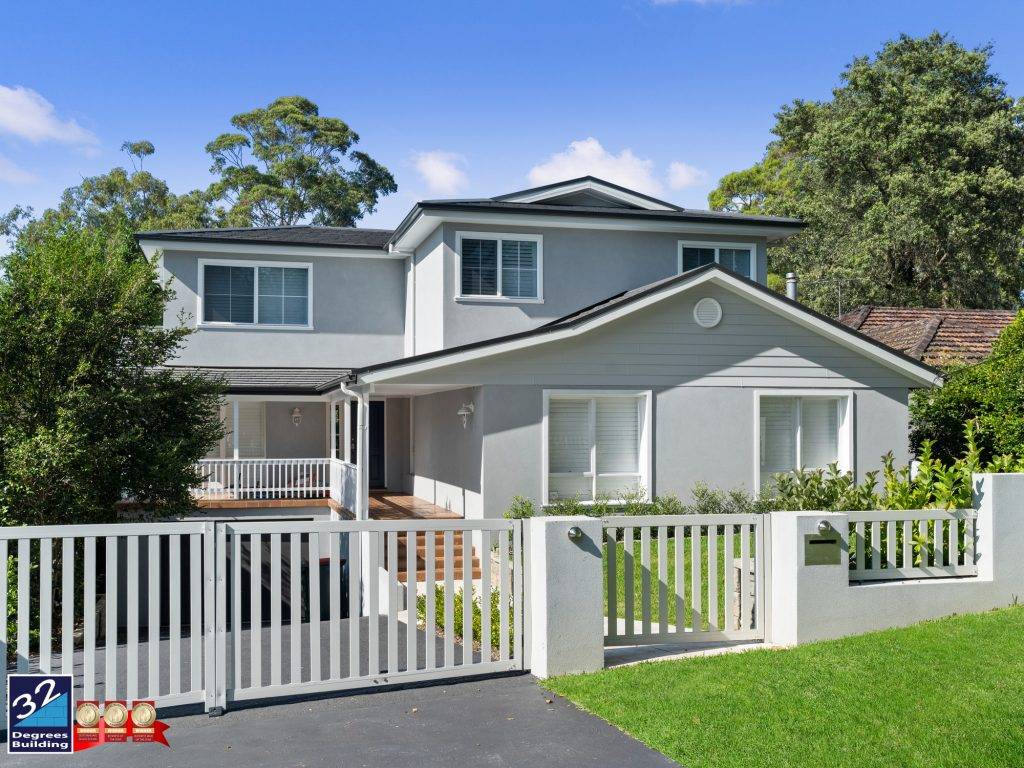
Second storey additions involve building an additional level on top of your existing home. This type of extension is popular in urban and suburban areas where land space is limited. Here are some of the factors to consider when deciding if a second storey addition is the most cost-effective option for you.
Pros of Second Storey Additions
- Maximises Land Space: If you have a small backyard or limited land space, a second storey addition is an excellent way to add more living space without sacrificing outdoor areas. It allows you to retain garden space, which can be especially valuable if you enjoy outdoor entertaining or if children or pets need room to play.
- Less Disruption: Since the work is primarily done above the ground floor, second storey additions can be less disruptive to your daily life than ground floor extensions. You can continue living in your home during the construction process, which can save you the cost and inconvenience of temporary relocation.
- More Affordable than Moving: If you love your current location and don’t want to uproot your family, a second storey addition is a more cost-effective option than moving to a larger home. Moving involves expenses like real estate commissions, moving costs, and potential renovations in a new home, which you can avoid by extending your current property.
- Potential for Better Views: By extending upwards, you may be able to take advantage of better views that were previously blocked by other buildings or trees. The elevated position can also offer increased privacy, as it is harder for passersby to see into second-floor windows.
- Confidence in a Fixed Cost: Building a second storey addition on top of your existing home is a more cost effective solution and as there aren’t any unknown costs as there is no ground floor works (eg. soil removal/excavation unknowns) it gives you the confidence of knowing your build cost – is your build cost.
Cons of Second Storey Additions
- Structural Constraints: Building a second storey addition requires careful consideration of the structural integrity of your home. If your home was built on steel frames, then it may not support a second storey addition or, you may need to reinforce the existing structure, which can significantly add to the overall cost.
- Limited Floor Plan Options: When extending upwards, the floor plan of your new level will be restricted by the layout of the existing floor below. This can limit your design options.
- Potential for Disrupting Neighbours: If you live in close proximity to your neighbours, a second storey addition may cause disruptions and inconvenience to them, leading to potential complaints and delays. Construction noise, dust, and the presence of construction equipment can all affect neighbour relations.
- Height Restrictions and Permits: Depending on your local council or municipality, there may be height restrictions that limit how high you can build. Obtaining the necessary permits for a second storey addition can be more complex and time-consuming than for ground floor extensions.
Ground Floor Extensions
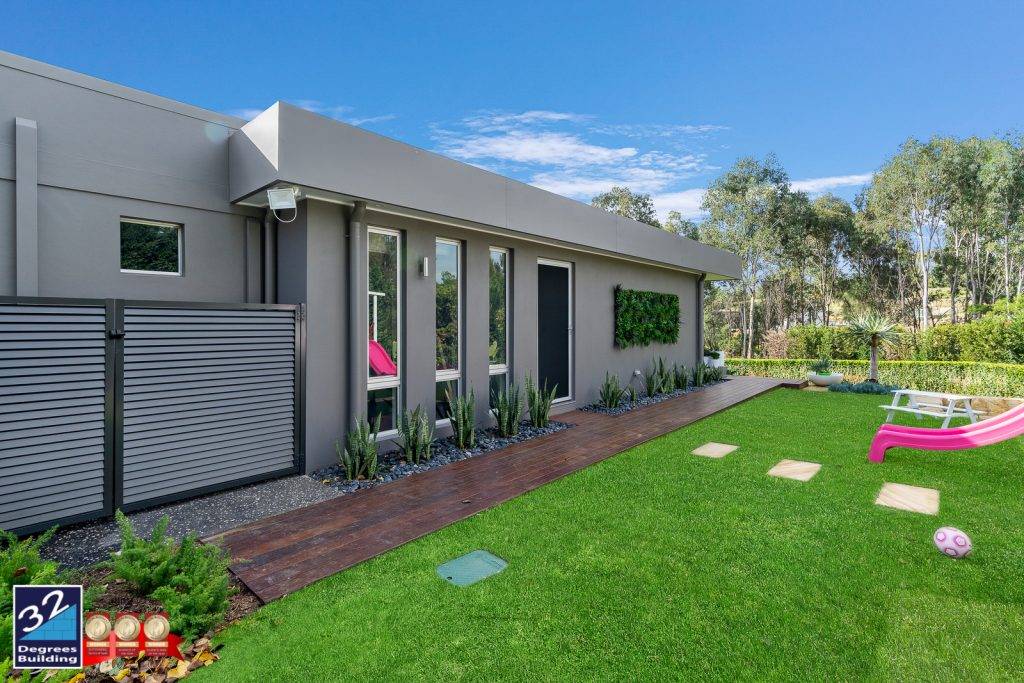
Ground floor extensions involve building outwards from your existing home. This type of extension is popular in suburban and rural areas, where land space is more readily available. Here are the pros and cons to consider when determining if a ground floor extension is the most cost-effective option for you.
Pros of Ground Floor Extensions
- Unlimited Floor Plan Options: With a ground floor extension, you have more flexibility with your floor plan since you’re not constrained by an existing structure. You can create an entirely new space that suits your needs and budget. This also allows for the addition of modern features such as open plan living areas, large windows, and bi-fold doors that open to the garden.
- Easier to Obtain Permits: In some areas, obtaining permits for a ground floor extension may be easier and less expensive than for a second storey addition. This can be due to fewer concerns about privacy and overshadowing of neighbouring properties.
- Better for Aging in Place: If you plan to live in your home as you age, a ground floor extension can provide you with a more accessible living space on one level. This is particularly beneficial for those with mobility issues or for those planning to age in place without the need for stairs.
Cons of Ground Floor Extensions
- More Disruption: Ground floor extensions can be more disruptive to your daily life since the work is being done at ground level. You may need to make alternate living arrangements during construction, which can add stress and additional costs.
- Less Yard Space: Since ground floor extensions take up more space on your property, you may have to sacrifice some outdoor areas or landscaping. This can impact your outdoor living space and may require a redesign of your garden or outdoor entertainment areas.
- More Costly: In general, ground floor extensions tend to be more expensive than second storey additions since they require more materials and labor. Foundation work can be particularly costly, especially if the ground conditions are challenging or if extensive excavation is required and some of the costs here can be unknown until construction has commenced.
- Zoning and Setback Requirements: Local zoning laws may dictate how close you can build to property lines, which can limit the size and shape of your ground floor extension. Setback requirements can significantly impact the design and feasibility of your project.
How to Determine the Most Cost-Effective Option for Your Home

When deciding whether to extend up or out, it’s essential to consider your specific circumstances and budget. Here are some factors to consider when determining the most cost-effective option for your home.
- Existing Structure: If your home is already structurally sound and can support a second storey addition, this may be the most cost-effective option. However, if you need to reinforce the existing structure, the cost of a ground floor extension may be more affordable.
- Local Building Regulations: Before deciding on a second storey addition or ground floor extension, it’s crucial to research local building regulations. Some areas may have restrictions on the height of the home or the percentage of the lot that can be built on. Compliance with these regulations can influence both the feasibility and the cost of your project.
- Size of Your Current Home: If you have a smaller home, you may get more value for your money by adding a second storey. However, if you have a larger home, a ground floor extension may be the more affordable option. The size and layout of your current home can also affect how easily it can be extended in either direction.
- Your Budget: Ultimately, your budget will play a significant role in determining whether a second storey addition or ground floor extension is the most cost-effective option for you. Consider the cost of materials, labor, and permits when making your decision. It’s also wise to include a contingency fund for unforeseen expenses that may arise during the construction process.
Other Factors to Consider
When deciding whether to extend up or out, there are some other factors to consider, besides cost. These include:
- Timeframe: If you need additional living space quickly, a ground floor extension may be the better option. Second storey additions tend to take longer to complete due to the complexity of building upwards and ensuring the existing structure can support the addition.
- Resale Value: While both second storey additions and ground floor extensions can add value to your home, it’s essential to consider which option will provide the most return on your investment. Think about the trends in your local real estate market and how future buyers might view the added space.
- Lifestyle Considerations: Your family’s lifestyle should also be a factor in the decision-making process. If you have young children or plan to grow your family, the layout and accessibility of the new space will be important. Likewise, if you entertain frequently, the flow between indoor and outdoor areas may influence your choice.
- Energy Efficiency: Extending your home provides an opportunity to improve its energy efficiency. Consider the orientation of the new addition, the potential for natural light and ventilation, and the type of insulation and windows you will use. These can all have long-term impacts on your energy costs and comfort levels.
Conclusion
When it comes to adding more living space to your home, there is no one-size-fits-all solution. The most cost-effective option for you will depend on your budget, the size and layout of your current home, and local building regulations. Consider all of these factors before making your decision, and consult with a professional builder or architect to help you determine the best option for your unique situation. With careful planning and consideration, you can successfully extend your home and create the extra space your family needs.
How to make your home energy efficient
Adding a second storey or ground floor extension to your home is a great way to accommodate for a growing family or to create additional living space.
Are you considering a second storey addition or ground floor extension to your home, but concerned about the impact it could have on your energy consumption? Fortunately, with today’s technology and design practices, creating an energy-efficient home is easier than ever before. In this blog post, we’ll explore some ways to make your home addition both eco-friendly and cost-effective.
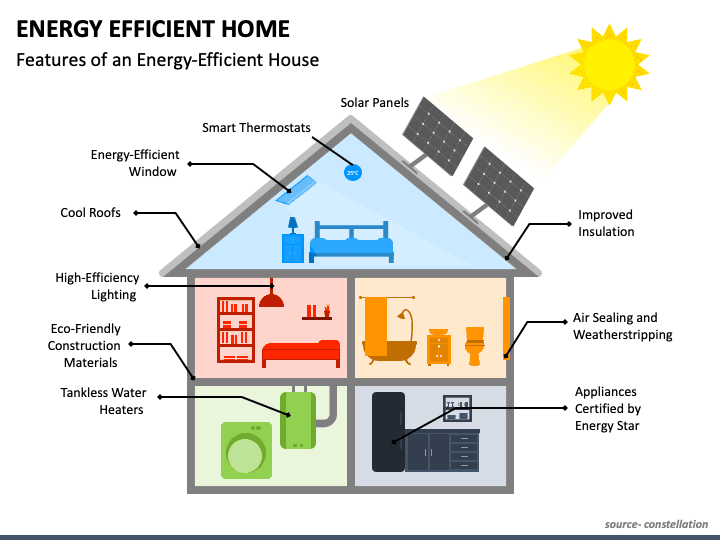
Heating and Cooling
For heating and cooling, the first thing you can do is choose a system that works with your specific needs. Options include split-system air conditioners, wall-mounted heating, and cooling units or ceiling fans. Consider natural gas, electric, solar power or hydronic heating to reduce your heating and cooling bills over time. Another way to reduce energy consumption is by using insulation, which will help to keep your home warm in the winter and cool in the summer. You can also install double-glazed or Low-E glazed windows to help prevent heat loss during colder months.
Hot Water Systems
Your hot water system is another major contributor to energy usage. Consider installing a solar hot water system to lower energy bills and reduce your carbon footprint. This system works by using solar panels to heat your water, which can then be stored in a tank for later use. An electric heat pump system is also a good option.
Lighting
Choosing the right lighting for your home will provide energy savings long-term. LED lights use far less energy and last longer than traditional halogens. They are also safe, reliable and can be used both indoors and outdoors.
Appliances and Technology
Many appliances and devices in our homes use significant amounts of electricity. Choosing energy-efficient options when shopping for new appliances like a fridge, dishwasher, washing machine or air-conditioner is a great way to reduce power usage. Even switching off appliances when not in use can make a significant difference to your energy bill.
Connected Home
A connected home is a smart home that uses technology to manage energy use. For example, you can connect your heating and cooling systems to a smart thermostat, allowing you to automate your home’s temperature settings. This means your home will always be at the perfect temperature and energy will be used efficiently as the system will learn your preferences.
Solar Panel/Photovoltaic Systems
A photovoltaic system is a type of solar panel that generates electricity when sunlight hits the panels. Once installed, you can power your home using energy from the sun, saving you money on electricity bills and reducing your environmental impact.
Batteries
Batteries are a great way to store excess energy and utilise it when needed, making your home entirely self-sufficient. Battery options like Tesla’s Powerwall allow you to store electricity generated by solar panels throughout the day for use at night when electricity prices are higher.
Rainwater
Incorporating a rainwater tank into your second storey addition or ground floor extension is an excellent way to increase your home’s energy efficiency. Instead of letting stormwater run off your roof, a rainwater tank can collect this water and store it for later use, reducing your reliance on mains water. You can then use this water for watering the garden or flushing toilets, saving you money on expensive water bills. In addition to its practical uses, using rainwater tanks is an eco-friendly solution that reduces your home’s environmental impact, making it a worthwhile investment in the long run.
Let us help you build an energy efficient Addition or Extension
Making your Second Storey Addition or Ground Floor Extension energy efficient can help reduce your environmental impact and save you money on energy bills. With a range of options available, from insulation and efficient lighting to renewable energy systems, there’s never been a better time to create an eco-friendly home addition or extension. No matter what your budget or needs, there are measures you can take to create a home that is sustainable, comfortable and cost-effective.
At 32 Degrees Building, we can help you along the journey toward an energy-efficient home addition or extension.
Feel free to contact us to learn more!
Trainee’s Efforts Rewarded With Full-Time Role
It is always great to see a trainee excel and be rewarded with a full-time role once they complete their qualification.
That’s been the case for Kelsey Ray, who has just completed her Certificate III in Business Administration with us here at 32 Degrees Building.
Kelsey is “delighted” to be staying on with the business, which specialised in custom built new homes, first floor additions and ground floor extensions. She will continue in an administration type role, utilising the skills she has developed in customer service, processing payroll and navigating MYOB.
“Kelsey has been a positive addition to our team,” said Victoria Size, Operations Manager at 32 Degrees Building.
“She is assertive in her ability to step in and assist in other areas where she can and is always willing to learn more. Kelsey now has a great understanding of accounts payable and payroll and is continuing her learning path with sales, client support, HR and accounts receivable, which will ensure that she is a great asset to any company she works for.”
The skills and knowledge Kelsey has learnt in her traineeship have been invaluable to her in regards to working in an office environment.
“Being able to develop the skills I need to start my career in business administration in a practical, real world application,” Kelsey said of what she’s enjoyed the most about her traineeship.
A key element to any young employee getting the most out of their traineeship is the support they have around them. Kelsey described the support she received the last year as “excellent”.
“Everyone at 32 Degrees Building have been so willing to share their knowledge and experience with me, and it was comforting to know that My Gateway was always there if I needed help with anything.”
Prior to beginning her traineeship at 32 Degrees Building, Kelsey worked in the veterinary industry and had limited administration experience. This didn’t pose an issue during her traineeship though, with Kelsey displaying an eagerness to learn and to help her colleagues when necessary.
“From the start Kelsey was all about the “why” – she had to understand why she was doing what she was doing and as soon as she understood this, she was able to effectively undertake her new role,” Victoria said.
Kelsey’s development throughout her traineeship has provided her with some great lessons and advice to help anyone looking to do a traineeship.
“Ask for help when you need it,” Kelsey said. “You’re there to learn and no one expects you to know how to do everything straight off the bat, so ask questions when you need to so you can get the support you need.”
“If you’re willing to put the effort in, you won’t regret it. The opportunity to learn on the job is truly invaluable and My Gateway will be there to help every step of the way.”
We are stoked to have Kelsey employed with us full-time as a valuable member of our team and thank My Gateway for their support throughout the process.
Start your career with us
Leading Hands, Carpenters, Carpentry Apprentices and Administrative Staff Required
Due to recent growth, we are looking for leading hands, carpenters, carpentry apprentices and administrative staff that live in the surrounding suburbs along the M4 & M5 corridors to join our team.
To apply, please call 02 4647 2324 and send your resume to admin@32degreesbuilding.com.au
Must have a drivers licence and a ute, an immediate start is available for the right applicant. Attractive packages available to the right candidates and based upon skill level. Apprentices are paid as per the Award.
What do we offer in return?
A challenging, rewarding and safe working environment where you can develop your skills and gain a variety of experience across the residential construction industry. We will help you to cement your future in your chosen trade and offer exciting career opportunities for you.
This Is Why People Love Custom First Floor Additions
First floor additions, also known as second storey extensions are increasingly popular for those homeowners who don’t want to lose valuable garden space but want to increase their family living space. Best of all, going up is easy and our team will do their best to ensure the process is smooth and the build is completed on time and with minimal disruption to your daily lives.
You can have a modern, liveable home with plenty of space for your family – without giving up the location you love.
Our team are the experts in planning and building custom/tailor-designed First Floor Additions
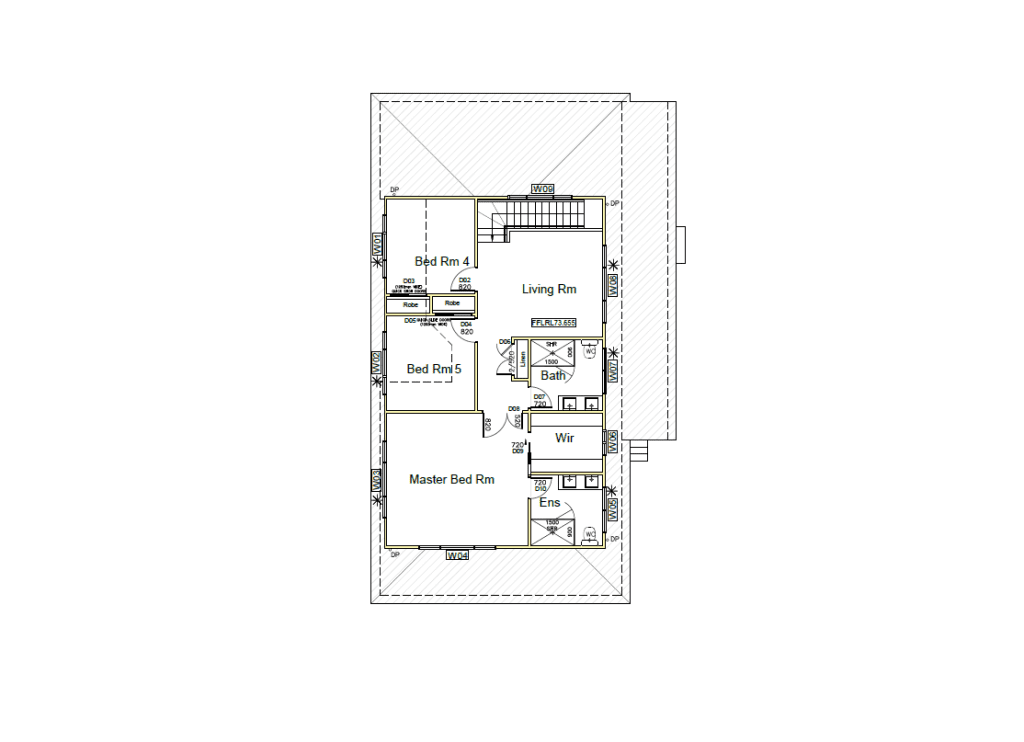
We are often approached by clients who would like to create an open plan living environment downstairs, whilst adding more room for the family to live comfortably upstairs. The best way to achieve this is with a Custom First Floor Addition.
As specialists in these types of builds, we have many years of experience enabling us to easily offer solutions and suggestions on products, layout and how to get the most from your investment. We are able to share with you relevant quality projects that have resulted in many of our clients becoming raving fans.
No Plans? No Worries!
If a client comes to us without plans, part of our service is to organise for a building designer to assist with the plans and design process. This is will be included in our Preliminary Agreement if required.
We can arrange for our draftspeople to consult with our clients at their home and discuss their project requirements. From there we will then provide plans based upon their specifications and work hand in hand with our clients and the draftsperson to ensure the plans continue to work within the tailored build cost estimate that we have provided.
Improve your lifestyle and bring your family together
When building their addition our clients often decide to open up downstairs living spaces, renovate their kitchen and bathrooms and create new living spaces internally and externally. Once the addition and renovation are completed they are left with a finished product that is like moving into a brand new home.
We are able to create open plan living spaces and improve their current living situation. Our mission is to bring families closer together.
Take away the stress, let us help you plan, manage and design your build
We have a streamlined process which is stress-free and fun. When you are building with 32 Degrees Building you don’t have to worry about anything other than choosing what you want to add to your home and we will work with you on the design to suit your home and your lifestyle.
Contact us to start your building journey today
Not ready to book? Check out our process and how we do things here.
What type of loans can you use to fund your addition or extension?
If you are building an addition or extension on your home you may find yourself needing to arrange finance to pay for the build. We can help you secure the appropriate finance for your build.
Refinance your current mortgage

To pay for your addition or extension you can opt to refinance your existing mortgage. This means that you will use the equity in your home to obtain a loan for a higher amount than what you currently owe to finance your addition or extension project.
The new loan will replace your old loan and you can choose to stay with your existing finance provider or move to a new finance provider. Refinancing has several advantages for homeowners with substantial equity in their homes.
First, it may allow you to obtain lower interest rates without changing your monthly mortgage payment or adding on a new payment.
Second, some lenders “may approve a loan based on the estimated value of your home once the addition is completed,” which is convenient for projects that require a large amount of money, such as a second story addition or ground floor extension.
Take out a Construction Loan
A construction home loan is a type of home loan designed for people who are building a new home, a first floor addition, ground floor extension or doing large scale renovations. It has a different loan structure to home loans designed for people buying an established or existing home.
A construction loan most commonly has a progressive drawdown. That is, you receive instalments of the loan amount at various stages of construction, rather than receiving it all at once at the start. You generally only pay interest on the amount that is drawn down, as opposed to on the whole loan amount.
A number of lenders offer construction loans that are interest-only during the construction period and then revert to a standard principal and interest loan.
Of course, a construction loan is just one potential source of funding for your project. The Federal Government recently unveiled its HomeBuilder scheme, which will give eligible homebuyers and existing owners grants of $25,000 to help them construct or substantially renovate their home. Strict eligibility criteria apply– for example, you’ll need to meet an income test, and be building a new home that’s worth less than $750,000 or a renovation that will cost at least $150,000. For more information visit our blog post here.
We can connect you with our finance specialist to discuss how to get started today.
Get a $25,000 contribution towards your Addition, Extension or Renovation through the HomeBuilder Program
Eligible Australians will be able to obtain a $25,000 HomeBuilder grant towards their addition, extension or major renovation under the near – $700 million federal government housing package in a bid to boost the economy and act as a lifeline to the home construction industry (Homebuilder program).
The government announced the $688 million HomeBuilder program on Thursday 4 June 2020. In an attempt to boost new projects between now and the end of the year, the Government will give $25,000 grants to owner-occupiers for certain works on their homes.
These works include first floor/second storey additions, ground floor extensions and large scale renovations.
Renovation work does not include structures separate to the main property, such as swimming pools, tennis courts, granny flats and sheds.
The scheme will not apply to investment properties or owners who intend on building or renovating on their own without the help of licensed builders.
The plan will be restricted to people on middle incomes and to new homes and major renovations valued between $150,000 to $750,000.
The pre-renovation value of the house must not exceed $1.5 million and excludes sheds, pools, granny flats and any other structures not attached to the property.
The temporary scheme that will last until the end of the year, aiming to build 30,000 homes by Christmas.
Construction of a new home or a substantial renovation (including first floor additions, second storey additions and ground floor extensions) must be contracted to begin within three months to prevent a rise in house prices.
The grants will be means-tested, allowing singles who earned up to $125,000 the previous financial year and couples who earned up to $200,000 to access the scheme.
The scheme will work along existing state and territory first-home owner grants programs, stamp duty concessions and other grant schemes, including the federal government’s first-home loan deposit scheme and first-home super saver scheme.
The HomeBuilder Program and its associated grants came to an end in March 2021.
If you’re planning a first-floor addition, ground floor extension or large scale renovation project you can start the planning process now. Or, reach out to our team below for more information.
That’s a wrap for 2019
Our team has officially wrapped up things for 2019! Here is an overview of our year!
Our office is now closed until 14th January 2020.
We wish everyone a safe and Merry Christmas and a Happy New Year!
You can still contact us on our website during the break and we will be in touch when we return. For any enquiries please fill out the form below.



Sydney is a wonderful place to live, but it can also be challenging when it comes to living arrangements. As property prices continue to soar, many families are finding it difficult to find affordable homes that fit their needs. Multi-generational families living together has become more common, particularly around the inner city suburbs, where there is a high demand for living space. However, with the increase in demand comes an equally high cost, which means that many families are turning to alternative solutions like home renovations, particularly second storey additions.
Adding a second storey addition to your home is more than just a way to gain extra living space; it’s an investment in your future. Many people assume that purchasing another property is a better investment, but this is not always the case. When you take into account the cost of purchasing and maintaining another property, along with the legal fees and taxes associated with buying and selling properties, the investment may not be worth it.
On the other hand, building a second storey addition is a better financial decision that has many benefits. Firstly, building a second storey addition on your home adds significant value to your existing property. Secondly, your home will have more space to accommodate your entire family, giving everyone room to spread out and enjoy different aspects of the house. Multi-generational living is becoming more acceptable and popular, particularly in the larger cities where real estate prices remain high, and families want to stay close to each other.
As a homeowner, choosing to build a second storey addition gives you the flexibility to create a design that suits your needs. Whether you need an additional bedroom, a home office, or a second lounge area, you can work with a professional builder who can create a custom design according to your requirements. With a bespoke design, you can ensure that your new space will be both functional and aesthetically pleasing.
Another advantage of building a second storey addition is that it is less disruptive than moving. Moving your entire family to a new home can be challenging and expensive, particularly when you consider the cost of moving fees, furniture removals, and utility connections. Building a second storey addition, on the other hand, requires minimal disruption to your lifestyle. You can continue to live in your home throughout the building process, ensuring that your children can maintain their routines and attend their regular schools.
Multi-generational families living together in Sydney are a growing trend, and building a second storey addition on your existing home is an excellent investment option. It’s cheaper than buying another property, gives you extra living space, adds value to your home and allows your family to stay close to each other.
If you are considering building a second storey addition for your multi-generational family, it is important to work with a reputable company like 32 Degrees Building. We have a proven track record of delivering high-quality, customised solutions for families in Sydney, and can help you achieve your goals while staying within your budget. With their expertise and experience, you can create a beautiful and functional home that supports your family’s unique needs.